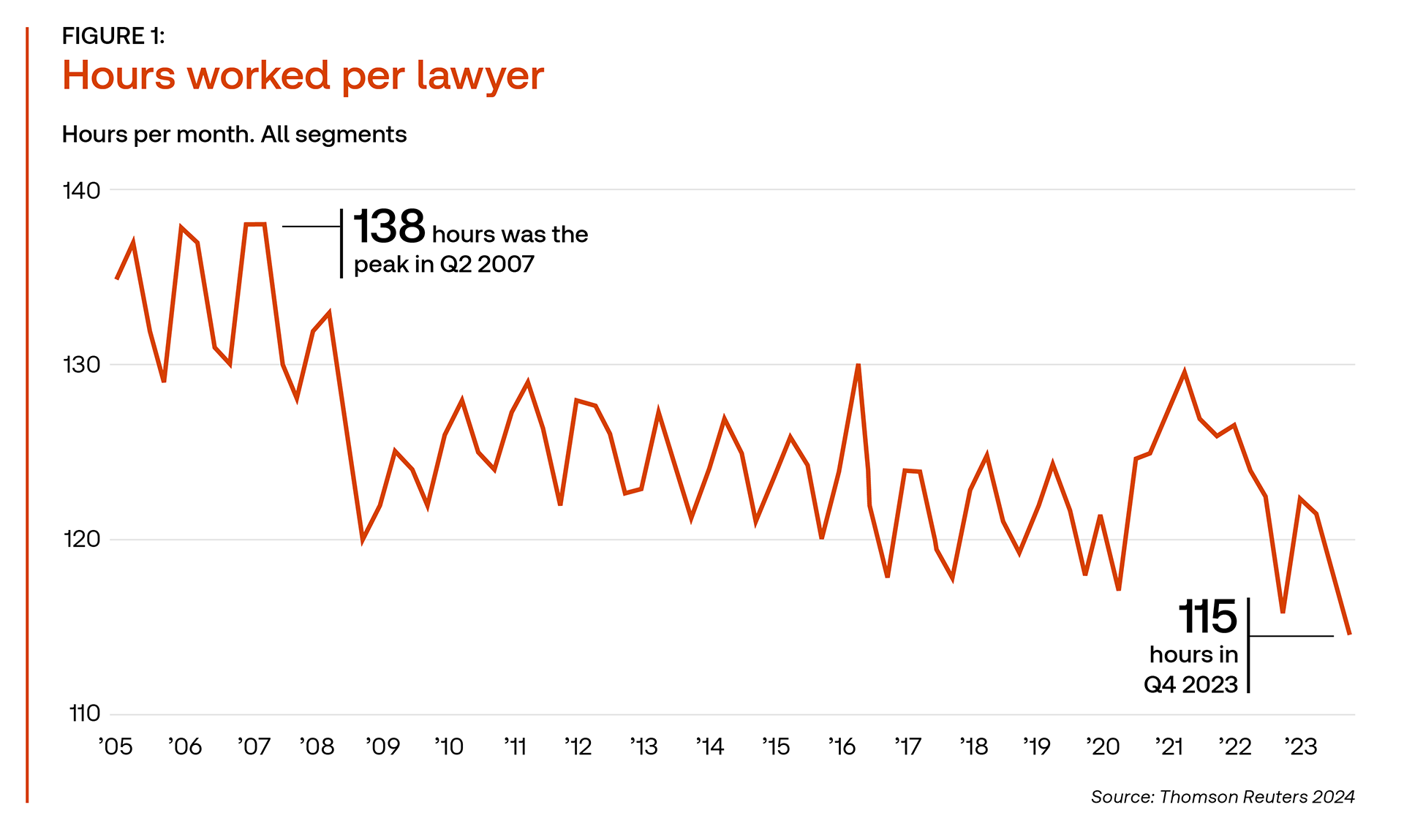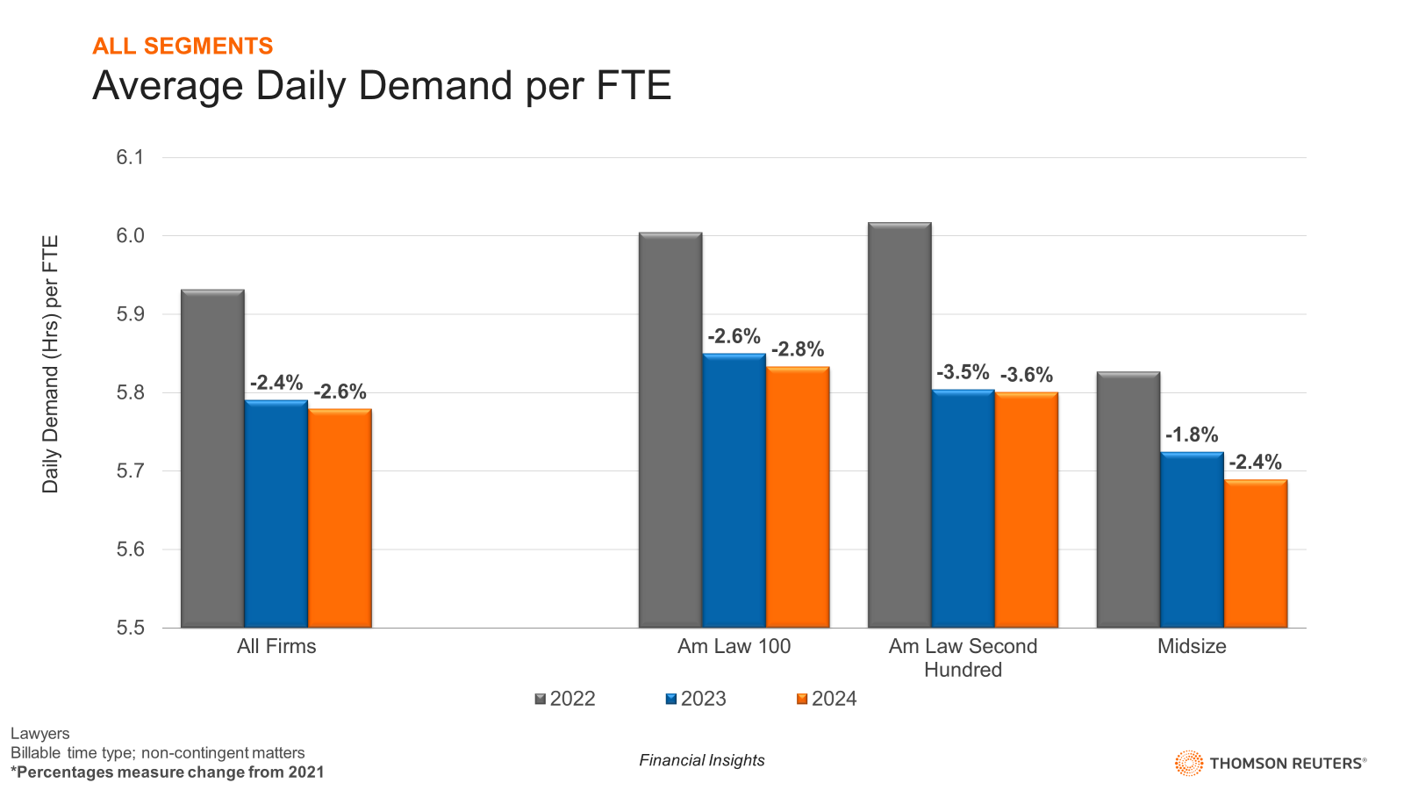As AI changes the way lawyers practice law, law firms must also change how they measure lawyer performance
We’re well into the fourth quarter of the year, which means lawyers are heavily focused on two particular elements of their business: collecting their fees and getting in those precious last few billable hours of the year. The latter task deserves some particular attention not only because of the immediacy of the need to book hours for this year, but also because of long-term trends around lawyer productivity.
To start, let’s address the initial problem. The term productivity as used by law firms is really a bit of an economic misnomer. For most industries, productivity deals with a measurement of outputs, or the things produced. For lawyers in law firms, productivity is actually a measure of inputs. And measuring the number of hours worked — the traditional way that law firms measure productivity — focuses on the amount of effort that goes into completing a task rather than the actual completion of the task or the amount of money it ultimately generates.
That syntactic quibble aside, there is clear and growing evidence that the way law firms measure productivity needs to change.
The problem with historical measures of productivity
Historically, lawyer productivity has been measured as a function of hours worked per lawyer per defined unit of time. Within the Thomson Reuters Institute, we have most typically reported two key variations of this metric: i) hours worked per lawyer per month; and ii) average daily demand per lawyer full-time equivalent (ADD per FTE).
Hours worked is a fairly standard metric employed by most law firms but is vulnerable to year-over-year fluctuations in working days in a given month. The latter metric, ADD per FTE, accounts for working day variation by tracking average hours per day.


Whichever option one chooses, however, it’s clear that these traditional measures of productivity have been in decline for some time.
Measuring hours per lawyer per month, we see a clear pattern of decline starting all the way back in 2007, some 17 years ago. Despite a bump during the transactional demand spike in 2021, the trendline of hours worked per lawyer per month is clearly pointing downward, off some 23 hours per lawyer per month since 2007. Even looking at ADD per FTE, it is clear that law firms have not been able to attain average daily demand figures on pace with 2022.
The diverging trends of productivity and profit
If law firm profits are inextricably intertwined with billable hours, as many law firm managers and partners would contend, then it would follow that we must be in the midst of a long-term decline in law firm profitability as well, right? Not exactly.
With the exception of 2022 when law firms experienced the double impact of declining demand and inflation rising faster rate growth, law firm profits have grown every year since 2010 with annual profits per equity partner (PPEP) increasing anywhere from 0.7% per year (2013) to as much as 16.1% (2021). Even in 2023, as traditional measures of productivity continued to decline, average PPEP improved by 2.3%.
Clearly, there must be other levers driving firm profitability beyond just worked hours.
Chief among these drivers has been rate growth. We’ve written volumes on law firm rates over the years, clearly marking them as a key component necessary to improved law firm profitability. As I once explained to a managing partner, it doesn’t take much effort to show that something matters more than rates.
There is clear and growing evidence that the way law firms measure productivity needs to change.
Assume a hypothetical law firm at which an associate bills 2,500 hours in a year. Did that associate have a good year? By many traditional measures, yes. But what if that associated only billed and collected $1 per hour. How does that change the assessment of that lawyer’s performance? Clearly, the ability to generate money outweighs the simpler measure of the number of hours worked.
And therein lies the basis for the declining case for old-school productivity metrics. We’re in a nearly two-decade-long pattern of declining performance on traditional metrics, yet lawyers keep finding ways to improve profits. Rate growth continues at a historic pace, and there is increasing discussion in the market of wider use of alternative fee arrangements such as fixed or flat fees that would seek to focus more on the value of the outcome of the task or matter for the client rather than the amount of work input into the matter.
In this environment, relying simply on the number of hours worked as a measure of lawyer performance could well be an inadequate measurement of a lawyer’s contribution to the law firm’s financial performance.
It is quite possible that the transactional boom of 2021 may have been the last spike in historic measures of lawyer productivity. However, that does not mean that each lawyer will be contributing a declining share to the firm’s revenue and profits. Law firms need to face the challenge of looking at lawyer performance through new lenses that better reflect the changing realities of today’s legal services market.
You can download the full Relative Performance Measures report, published by the Thomson Reuters Institute, here.







